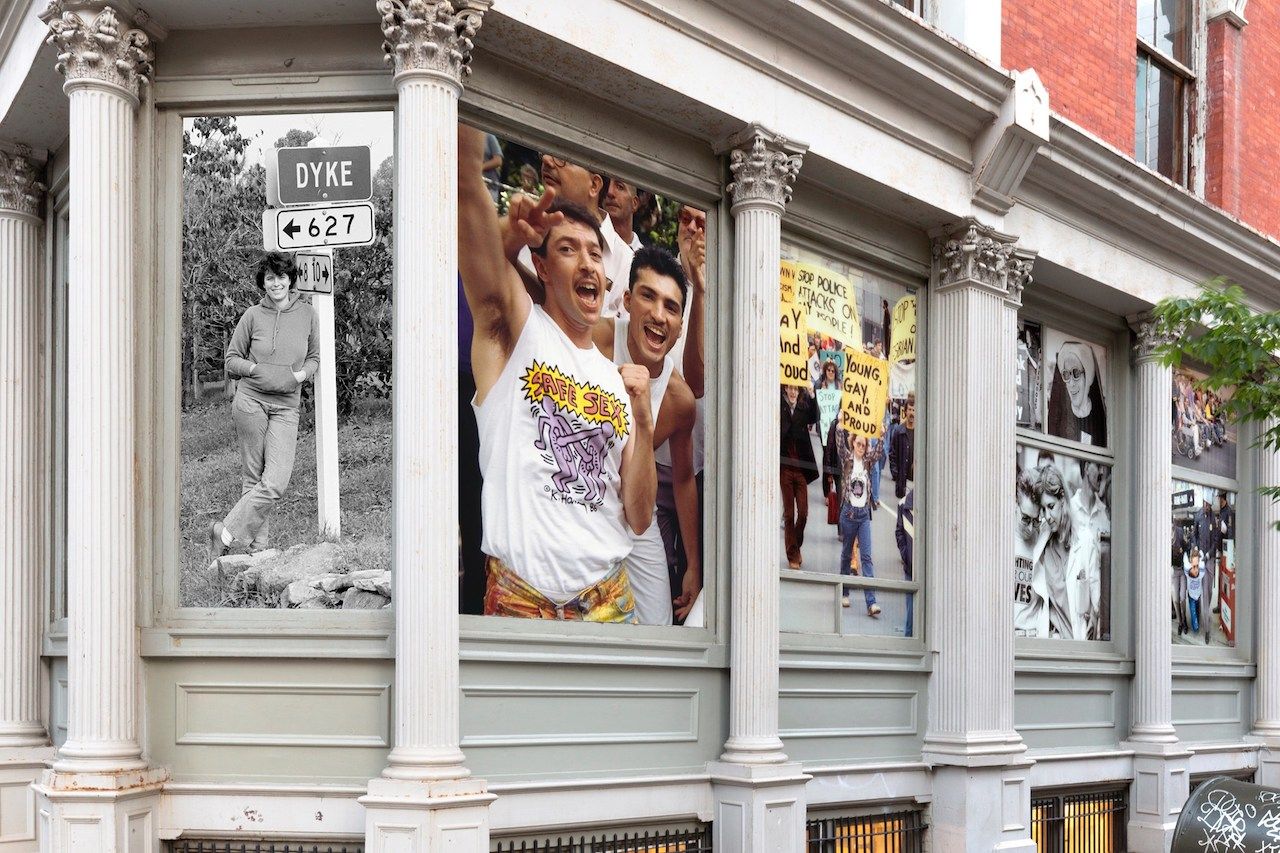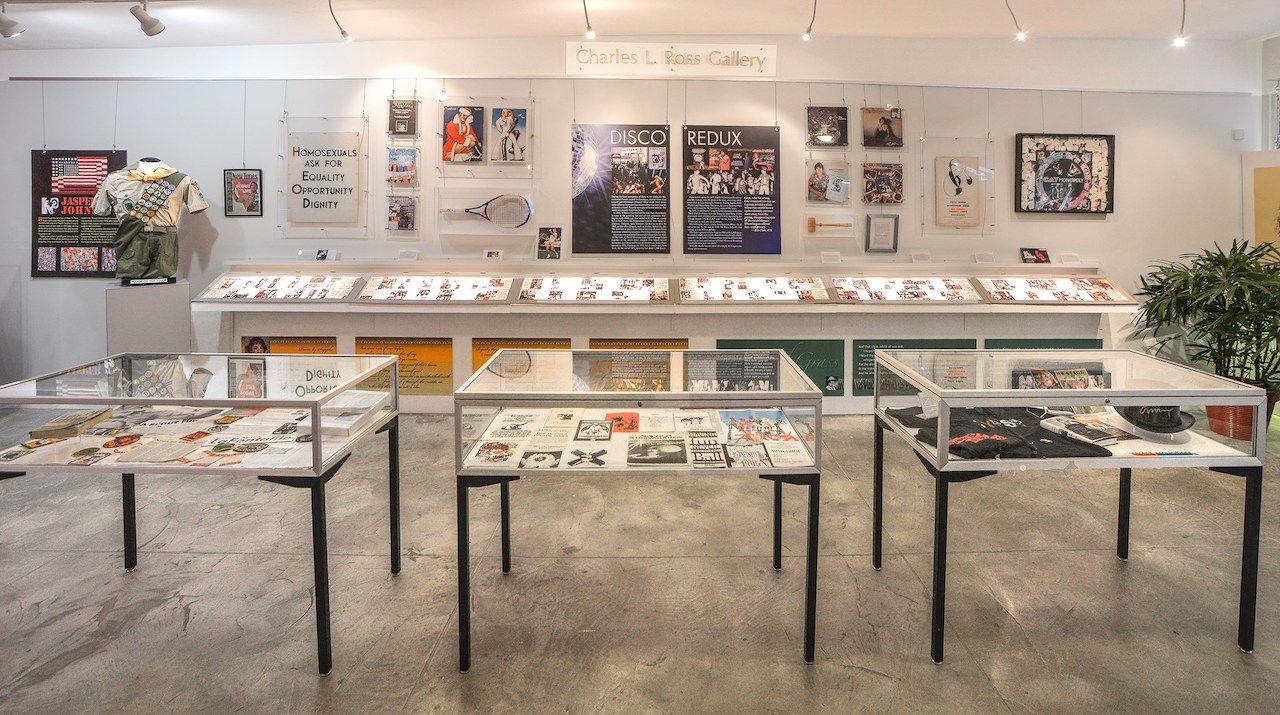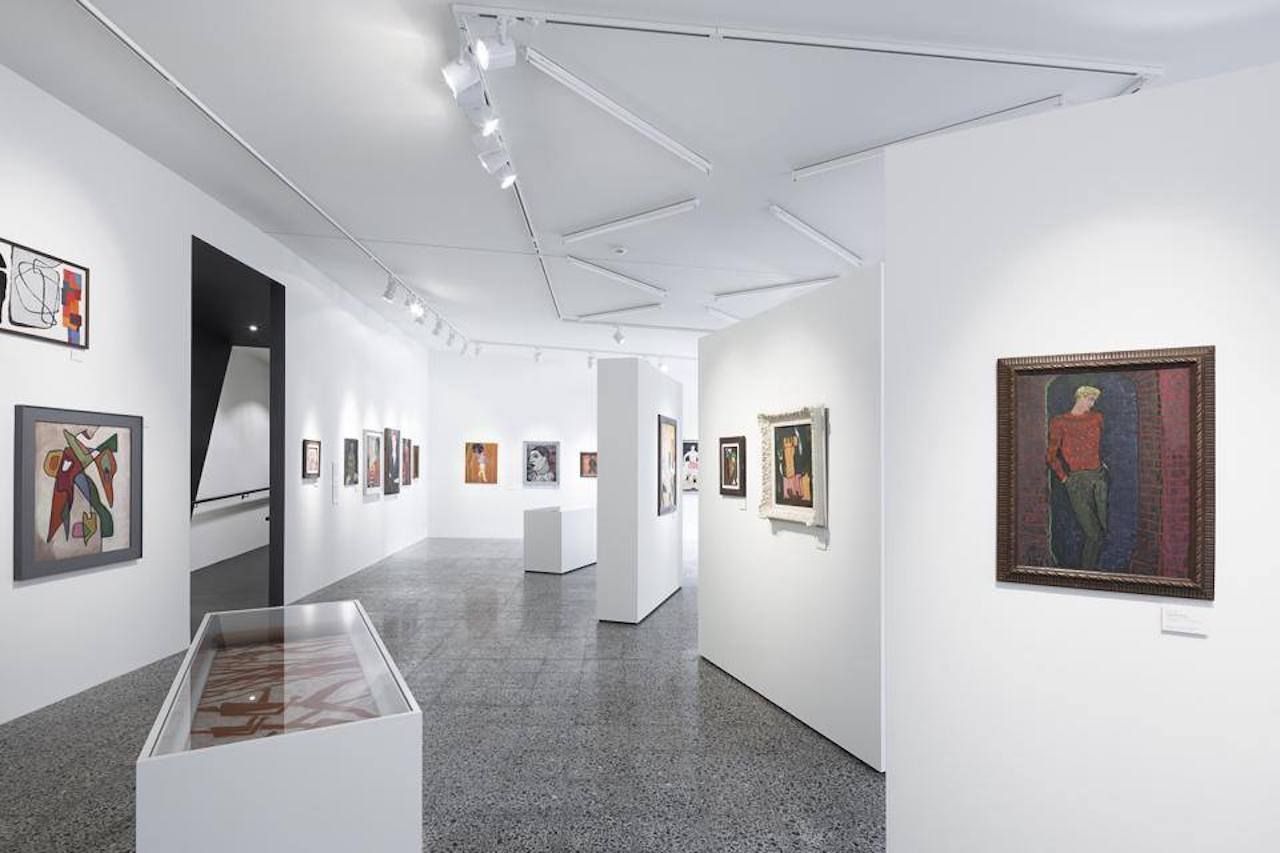People in power control the pages of history; people without it usually suffer the consequences. In a recent analysis of commonly used history textbooks in Texas and California, the New York Times found that students in Texas receive information only about hot-button LGBTQ issues from the past 50 years: Stonewall, the AIDS crisis, and the recent fight for marriage equality. In California, students receive additional information concerning queer history like sex assignment surgery in the 1950s and cultural contributions made by historical LGBTQ figures. Clearly, not all LGBTQ history lessons are created equal.

The Best LGBTQ Museums and Archives Around the World
Preserving and sharing the history and culture of queer individuals is a necessary step in the fight for LGBTQ rights. Invisibility leads to misunderstanding and discrimination. Many queer historians realized this after the gay liberation movement took off in 1969 and started collecting and exhibiting queer art and artifacts as a way to promote acceptance and awareness for its communities. These 13 museums and archives around the world are the best in their field. Each one celebrates LGBTQ lives and protects queer voices to ensure they’re never again lost to the prejudice of those in power… and publishing.
1. Leslie-Lohman Museum of Gay and Lesbian Art

Photo: Leslie-Lohman Museum of Art/Facebook
The summer of 1969 was radical for the state of New York. Woodstock took place in August, the Stonewall Riots broke out in June, and one month prior, gay couple Charles Leslie and Fritz Lohman held the first “Exhibition of Homoerotic Art” in their sprawling Soho studio. The subversive art collection drew a massive crowd, prompting the pair to continue growing and exhibiting their exceptional assemblage over the next decade. When the AIDS epidemic hit Manhattan, the partners rescued works from the homes of dying gay artists that would’ve otherwise been destroyed.
The Leslie-Lohman Gay Art Foundation was created in 1987, officially became a museum in 2016, and is currently located in a sprawling first-floor space on Wooster Street. It’s often regarded as the world’s first queer art museum. The collection of over 30,000 objects spans three centuries and includes everything from phallus sculptures and a “Cunt Coloring Book” to famous paintings by Keith Haring and other notable queer artists. There are six exhibitions shown throughout the year and a separate project space where local artists showcase their work and partake in figure drawing sessions.
Where: 26 Wooster Street, New York, New York, United States
2. Tom of Finland Foundation
This two-story house on Laveta Terrace in Echo Park seems unassuming from the outside, but once you pass the tall street-facing hedges, you’re in a veritable gay-erotica dreamland. Touko Laaksonen, the Finnish artist who worked under the pseudonym “Tom of Finland” to produce some of the most influential images in modern gay culture, is the rasion d’etre. After visiting Los Angeles in 1978, he started splitting his time between Europe and this very home, establishing the Tom of Finland Foundation in 1984. The house pays homage to his massive body of work (featuring lots of massive, muscle-bound male bodies) and serves as a safe space for other erotic artists looking to showcase and create material of their own. The estate is open to guests on Wednesdays from 5:00 PM to 7:00 PM for an art-viewing tea party; a nude figure-drawing session takes place once a month on Sundays from 1:00 PM to 4:00 PM.
Where: 1421 Laveta Terrace, Los Angeles, California, United States
3. ONE National Gay & Lesbian Archives

Photo: ONE National Gay & Lesbian Archives/Facebook
With over two million materials dedicated to LGBTQ history and culture, there’s way more than one reason why these archives are remarkable. Still, we’ll only begin with a couple: On top of being the US’ oldest active queer organization, the ONE Archives has the largest assemblage of LGBTQ-related items in the world. The organization began in 1952, and the archive’s main repository has been part of the University of Southern California Libraries since 2010. This space, located on West Adams Boulevard, functions as a gallery, cinema, and community center. ONE Gallery, an off-site exhibition space in the heart of West Hollywood (LA’s gayborhood), hosts free exhibitions throughout the year featuring historical documents and art from the expansive collection.
Where: 909 West Adams Boulevard, Los Angeles, California, United States
4. Museum of Trans History and Art
In 2013, MOTHA was founded as a platform for sharing the often-underrepresented voices of trans, non-binary, and gender non-conforming artists and historians. The company shares a series of performances, panel discussions, and exhibitions throughout the year, mainly in the San Francisco Bay Area, but operates without a permanent home. MOTHA’s goal is to become a brick-and-mortar institution where artists, hirstorians, and scholars can showcase their work. If all goes as planned, MOTHA will be the first museum in the world dedicated specifically to the transgender community.
Where: San Francisco, California, United States
5. GLBT History Museum

Photo: The GLBT Historical Society/Facebook
At the height of the AIDS crisis, a group of queer activists began gathering discarded possessions from dying gay men to save cultural stories that would’ve otherwise been lost with the pandemic. The many photos, letters, and other memorabilia they collected gave birth to America’s first queer history museum. This treasure trove of queer Americana, featuring everything from Harvey Milk’s personal belongings to matchbooks from old bathhouses, opened its current exhibition space just off Castro Street in 2010.
A permanent exhibition in the main gallery, “Queer Past Becomes Present,” draws on documents that span over 100 years of LGBTQ history in the United States with a sharp focus on the Bay Area. Two other galleries offer rotating exhibitions dedicated to topics like LGBTQ activism and queer art. The Dr. John P. De Cecco Archives and Research Center, located in Mid-Market, houses the museum’s vast array of periodicals, artifacts, and oral histories.
Where: 4127 18th Street, San Francisco, California, United States
6. Lesbian Herstory Archives
Herstory is just as important as his, but in queer culture, it’s often a struggle for the letters L, B, T, and Q to be heard above the roar of the G. As the gay liberation movement began in the 1970s, a group of women recognized this sway of the patriarchal pendulum and banded together to form the Lesbian Herstory Archives as a way to safeguard the records of lesbian life. LHA, located in a brownstone on a residential street in Park Slope, Brooklyn, is now the world’s largest archive curated by lesbians and about lesbians. The archives share its robust collection in several traveling exhibits, including “Queer Covers,” which takes a look at lesbian pulp fiction and its related artwork from the late 1930s to the 1960s. Guests and researchers are welcome to check out the archive’s many photographs, books, videos, and recordings whenever they’re open; groups can schedule tours in advance.
Where: 484 14th Street, Brooklyn, New York, United States
7. Transgender Archives at the University of Victoria

Photo: University of Victoria/Facebook
With materials that span over 1.5 football fields in length, this UVic Library archive is the most extensive collection in the world dedicated to political and cultural histories of trans, non-binary, and Two-Spirit people. The wealth of items cover 15 languages, 23 countries, and nearly 150 years. While you can search the archives through the website’s discovery tool, taking a trip to see British Columbia’s rugged coastline and steep mountain ranges is almost as epic as getting to explore the university’s array of records, newsletters, videos, and artwork. Thanks to the vision of out trans man Dr. Devor Aaron, this groundbreaking collection gives visibility to a group of people often pushed to the sidelines of queer history, even in other LGBTQ museums and archives. The UVic Transgender Archives has been actively acquiring trans-related documents since 2007.
Where: Victoria, British Columbia, V85 5C2, Canada
8. Leather Archives and Museum
In the late 1950s, gay leather bars started popping up in major queer enclaves like San Francisco, New York, and Chicago. These hyper-masculine watering holes were a sexualized response to the anti-establishment biker movement following World War II. Within two decades, leather and BDSM would become an integral part of the queer community. Recognizing its importance in LGBTQ culture, Chuck Renslow and Tony DeBlase (designer of the leather pride flag), opened the Leather Archives and Museum in Chicago in 1991. The research center, library, and galleries offer a safe space to learn about the history of leather, kink, and fetish culture. Within the museum’s eight exhibition spaces, visitors can experience a kink dungeon, a “Room of Her Own” (think Virginia Woolf plus leather), and a gallery featuring ephemera from old leather bars.
Where: 6418 North Greenview Avenue, Chicago, Illinois, United States
9. Andy Warhol Museum

Photo: Sergei Bachlakov/Shutterstock
The late-great pop art pioneer Andy Warhol is a gay icon, and the Pittsburgh museum dedicated to his life’s work takes a colorful look at his overtly queer aesthetic. Warhol pushed the boundaries of queer art long before “gay” was okay — you can see it in his 1950s line drawings depicting the male form; the sexually charged Piss, Oxidation, and Cum paintings from the 1970s; and his self-portraits in drag. The seven-floor museum showcases his seminal works too — there are plenty of Campbell Soup cans and celebrity screenprints on display — all delightfully infused with the artist’s queer and campy point of view. On the last Saturday of each month, guests can take a guided tour exploring how Warhol’s sexual identity influenced his art. In addition to this, the museum operates as a queer performance space and hosts two annual LGBTQ initiatives — a prom for local queer youth and a seven-week School of Drag workshop for 13-19-year-olds.
Where: 117 Sandusky Street, Pittsburgh, Pennsylvania, United States
10. IHLIA LGBT Heritage Archives
Holland’s first gay activist, Jacob Anton Schorer (1866-1957), founded the Dutch Scientific Humanitarian Committee (NWHK) in the first half of the 20th century and began amassing one of Europe’s first collections of scientific texts about homosexuality. When Germany invaded the Netherlands in 1940, he destroyed the archive. Luckily, his efforts were not in vain. His name now adorns one of the libraries run by IHLIA — the largest archive of LGBTQ materials in Europe.
Located in Amsterdam’s public library, IHLIA dates back to 1999 when Homodock and the Lesbian Archives of Amsterdam joined forces to create a space where queer history could be preserved for future generations. In its first year, the archives worked tirelessly to reconstruct Schorer’s collection, which contains many of NWHK’s original texts. The entire IHLIA collection — spanning over 100,000 pieces — includes books, films, photographs, t-shirts, and even queer condom packaging. While most of the materials are only viewable on-premises, there’s a pink cabinet of items that are free to borrow, and a catalog available online for “Open Up!,” a project dedicated to the history of LGBTQ life in central, east, and southeast Europe.
Where: Oosterdokskade 143, Amsterdam, Netherlands
11. Stonewall National Museum and Archives

Photo: Stonewall National Museum & Archives/Facebook
Don’t let the name fool you — aside from its collection of over 30,000 LGBTQ works of art, records, and other materials, this Sunshine State museum has no connection to the NYC bar where the gay liberation movement began in 1969. When Mark Silber started collecting queer erotica in his Hollywood basement in 1972, “Stonewall” was already synonymous with gay rights, so he used the name to attract queer folks without ruffling any conservative Floridian feathers. In addition to its extensive queer archive, SNMA has a gallery in Wilton Manors, a town that lovingly refers to itself as “the second gayest city in America.” (Provincetown and Palm Springs may have a bone to pick with this statement, but we digress.) The gallery hosts a series of exhibits throughout the year, along with film screenings, panel discussions, and other LGBTQ-centric events.
Where: 2157 Wilton Drive, Wilton Manors, Florida, United States
12. Australian Lesbian and Gay Archives
What started in 1978 as a few small filing cabinets has grown into an archive of over 150,000 items related to LGBTQ life in Australia — the country’s largest repository of its kind. In addition to its extensive research database, available by appointment, the Melbourne-based ALGA hosts in-house exhibitions celebrating local queer history. This year, the volunteer-run organization will relocate its headquarters to Melbourne’s Victorian Pride Centre, a new multi-use space that’ll be home to many of the area’s major LGBTQ organizations.
Where: Melbourne, Australia
13. Schwules Museum

Photo: Schwules Museum/Facebook
In the novel Gay Berlin, historian Robert Beachy argues that the modern conversation surrounding homosexuality, and the political movement that sprang forth, originated in Germany in the late 19th century. It’s fitting, then, that Germany is home to the world’s first gay history museum. The museum was founded in 1985, one year after a popular LGBTQ-centric exhibit at the Berlin City Museum sparked public arousal for more queer content. Located in a former Schöneberg printing house near a strip of popular gay bars, the expansive collection is the perfect way to spend a couple of hours prior to hitting up the late-night haunts in Berlin’s gayborhood. Although Schwules Museum’s offerings initially catered mostly to cis-gay males (schwul is the Deutsch equivalent of ‘gay’), curators are actively working to create an inclusive space that also illuminates the stories of lesbians and trans identities.
Where: Lüzowstrasse 73, Berlin, Germany